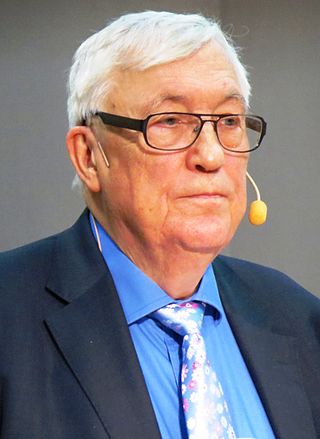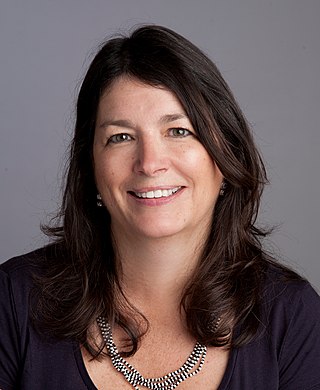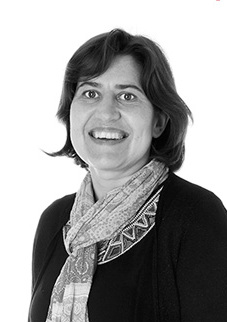Related Research Articles

Milutin Milanković was a Serbian mathematician, astronomer, climatologist, geophysicist, civil engineer and popularizer of science.

Bert Rickard Johannes Bolin was a Swedish meteorologist who served as the first chairman of the Intergovernmental Panel on Climate Change (IPCC), from 1988 to 1997. He was professor of meteorology at Stockholm University from 1961 until his retirement in 1990.

Jean Jouzel, is a prominent French glaciologist and climatologist. He has mainly worked on the reconstruction of past climate derived from the study of the Antarctic and Greenland ice.

The European Geosciences Union (EGU) is a non-profit international union in the fields of Earth, planetary, and space sciences whose vision is to "realise a sustainable and just future for humanity and for the planet." The organisation has headquarters in Munich (Germany). Membership is open to individuals who are professionally engaged in or associated with these fields and related studies, including students and retired seniors.

Lennart Bengtsson is a Swedish meteorologist. His research interests include climate sensitivity, extreme events, climate variability and climate predictability.
John Imbrie was an American paleoceanographer best known for his work on the theory of ice ages. He was the grandson of William Imbrie, an American missionary to Japan.
William Richard Peltier, Ph.D., D.Sc. (hc), is university professor of physics at the University of Toronto. He is director of the Centre for Global Change Science, past principal investigator of the Polar Climate Stability Network, and the scientific director of Canada's largest supercomputer centre, SciNet. He is a fellow of the Royal Society of Canada, of the American Geophysical Union, of the American Meteorological Society, and of the Norwegian Academy of Science and Letters..
George Kukla was a climatologist who was senior research scientist at the Lamont–Doherty Earth Observatory of Columbia University. Kukla was a member of the Czechoslovak Academy of Sciences prior to emigrating to the US, and a pioneer in the field of astronomical climate forcing. In 1972 he became a central figure in convincing the United States government to take the dangers of climate change seriously.
Wang Pinxian is a Chinese marine geologist. He is an academician of the Chinese Academy of Science.
James D. Hays is a professor of Earth and environmental sciences at Columbia University's Lamont–Doherty Earth Observatory. Hays founded and led the CLIMAP project, which collected sea floor sediment data to study surface sea temperatures and paleoclimatological conditions 18,000 years ago.
David A. Hodell is a geologist and paleoclimatologist. He currently holds the position of Woodwardian Professor of Geology in the Department of Earth Sciences at the University of Cambridge, where he is also a fellow of Clare College. He is a dual citizen of the United Kingdom and the United States. Previously, he taught at the University of Florida from 1986–2008, earning the rank of full professor in geological sciences. Hodell was also the director of the Stable Isotope Laboratory from 1996–2008. Hodell earned his Ph.D. in 1986 in oceanography from the University of Rhode Island after earning his bachelor of arts in 1980 in geology from the University of Vermont.

André Léon Georges Chevalier Berger is a Belgian climatologist and professor. He is best known for his significant contribution to the renaissance and further development of the astronomical theory of paleoclimates and as a cited pioneer of the interdisciplinary study of climate dynamics and history.

Maureen E. "Mo" Raymo is an American paleoclimatologist and marine geologist. She is the Co-Founding Dean of the Columbia Climate School, Director of the Lamont–Doherty Earth Observatory of Columbia University, the G. Unger Vetlesen Professor of Earth & Environmental Sciences, and Director of the Lamont–Doherty Core Repository at the Lamont–Doherty Earth Observatory of Columbia University. She is the first female climate scientist and first female scientist to head the institution.

Jasper A. Vrugt is a Dutch scientist/engineer/applied mathematician known for his work in the earth sciences: surface hydrology, soil physics, hydrogeophysics, hydrometeorology, and geophysics. Vrugt is an assistant professor at the University of California, Irvine and holds a joint appointment in the Department of Civil and Environmental Engineering and the Department of Earth System Science. He also holds a part-time appointment as associate professor at the University of Amsterdam, Faculty of Science (CGE).
The Hans Oeschger Medal is an award bestowed by the European Geosciences Union (EGU) to recognise scientists who have made "outstanding achievements in ice research and/or short term climatic changes ." The award was established by the European Geophysical Society (EGS) in recognition of the scientific achievements of Professor Hans Oeschger. It was awarded by the EGS in 2002 and 2003, and subsequently by the EGU.
Wolfgang "Wolf" Helmut Berger was a German-American oceanographer, geologist, micropaleontologist and emeritus professor at the Scripps Institution of Oceanography, University of California, San Diego. His research interests comprise "micropaleontology, marine sedimentation, ocean productivity, carbon cycle, ocean history, climate history, and history of oceanography."

Valerie Masson-Delmotte is a French climate scientist and Research Director at the French Alternative Energies and Atomic Energy Commission, where she works in the Climate and Environment Sciences Laboratory (LSCE). She uses data from past climates to test models of climate change, and has contributed to several IPCC reports.

James Zachos is an American paleoclimatologist, oceanographer, and marine scientist. He is currently a professor and chair of the Department of Earth and Planetary sciences at University of California, Santa Cruz where he was elected to the National Academy of Sciences in 2017. He has conducted research on a wide variety of topics related to biological, chemical, and climatic evolution of late Cretaceous and Cenozoic oceans, and is credited with developing a new understanding of long-term climate change and climate transitions over the past 65 million years. His investigations of past climatic conditions help predict the consequences of anthropogenic carbon emissions on future climate change.
Akio Arakawa was a Japanese-born American climate scientist. He was an Emeritus Professor in the Department of Atmospheric and Oceanic Sciences at the University of California, Los Angeles.

The Arthur Holmes Medal and Honorary Membership is one of the most prestigious awards of the European Geosciences Union (EGU). The medal is awarded to scientists who have achieved exceptional international standing in solid Earth sciences for their contributions and scientific achievements. The medal is awarded annually at the General Assembly of the European Geosciences Union since 2005. From 1983 to 2004, the Arthur Holmes Medal was awarded by the European Union of Geosciences (EUG), one of the predecessors of the EGU.
References
- ↑ "EGU - Awards & medals - Milutin Milankovic Medal". European Geosciences Union. Retrieved 18 May 2018.
This medal was established by the Climate: Past, Present & Future Division in recognition of the scientific and editorial achievements of Milutin Milankovic. It is awarded to scientists for their outstanding research in long-term climatic changes and modelling.